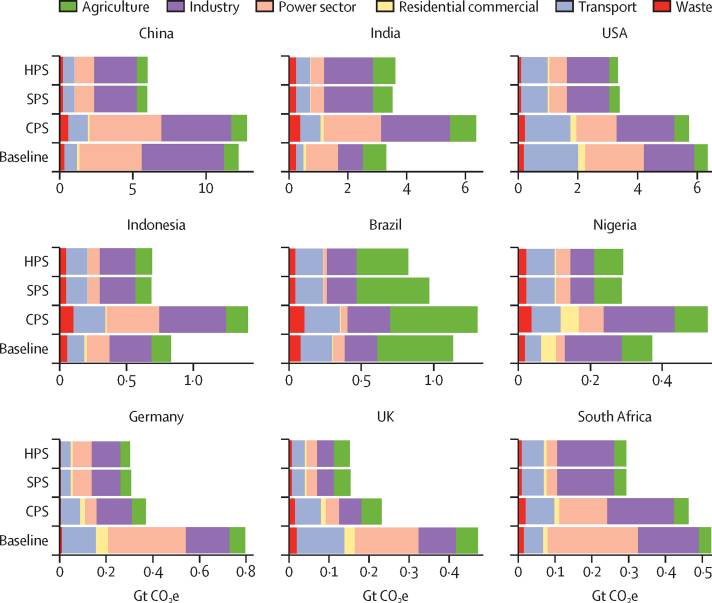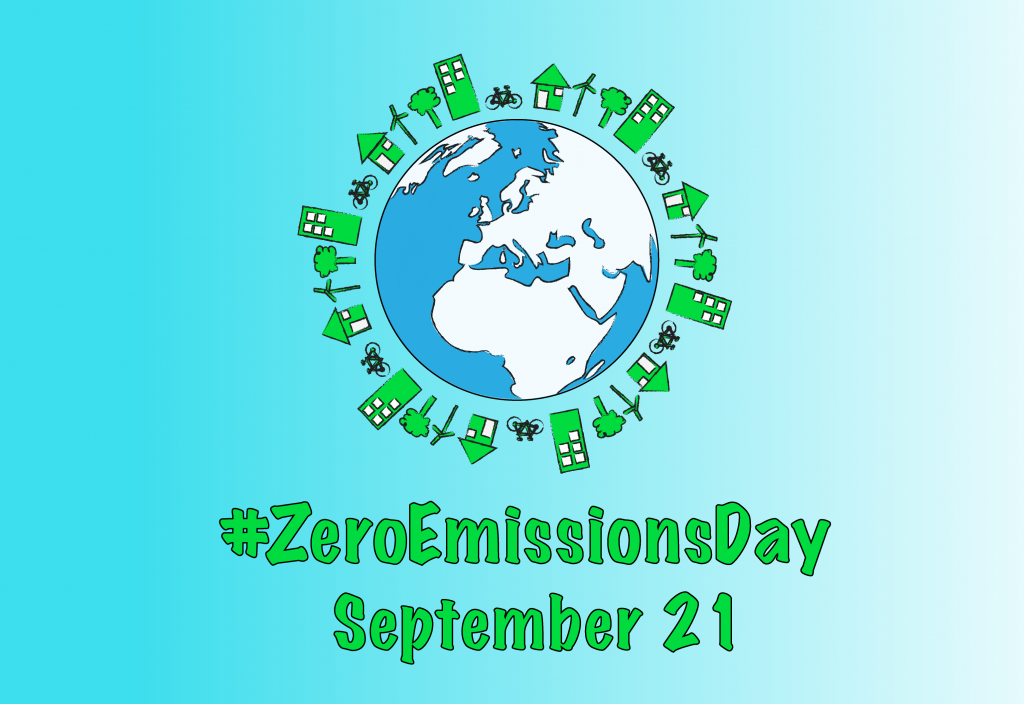“Take a break!” This phrase is something many exhausted adults would love to hear in this 21st century. Where society has become a hive of activity, it is a requirement to exert yourself, if you want to thrive. But why confine relaxing only to us humans? Along with us, the whole world is running non-stop. It is true, that the perks of this alliance are for the greater good. Even so, has it ever occurred to you, that the adverse impact of it, is nothing but an immense pitfall for the whole entity? Hence why Zero Emissions Day has been named to celebrate and to promote the importance of reducing our environmental footprint and to give a chance at least a day per year to reset ourselves. On this significant day, the majority across the globe join hands to deter future peril.
What is Zero-Emission?
Under United Nation’s Sustainable Development Goals, which state crucial concerns prevalent in many corners of the Earth, Goal 13 is listed as “‘Climate Action’ – Take urgent action to combat climate change and its impacts”. Climate change is undeniably by far the salient challenge our Earth has happened to witness. Skyrocketing levels of greenhouse gases contribute to this shocking spread of hazards. Its effects on the environment are evident yet disastrous. Global warming and habitat loss, health impacts, increased wildfires, and declining water supplies are some of the aftermaths of this growing issue.

However, if considered the primal core for all these setbacks, it is none other than the solid scale of emissions- chiefly CO2 being the frontline greenhouse gas. Even now, where I’m just sitting and pouring down words on a screen, I emit CO2 to the surroundings by exhaling. Every living being does that. But is it possible to stop, every single count of emissions? Having said that, Zero-emission, more specifically net zero-emission means, eliminating additions of new emissions to our environment. Particularly this indicates preventing the emission of man-made wastes such as industry, various transport facilities, electronics, etc., but of course not breathing! Emissions will continue, but they will balance out by the intake of equivalent amounts from the environs.
On close analysis, it is crystal clear that zero-emission is becoming a rallying cry to overthrow climate change. Furthermore, the goal of achieving net-zero Carbon by the year 2050, has become somewhat of a hot topic in the world; especially in developed and sophisticated countries such as the USA. Myriads of strategies have been introduced to countries to reduce the carbon footprint and by these nations also many positive practices like Nationally Determined Contributions (NDCs) have been prepared to beat back this threat.
Paris Agreement of 2015 states a few perceptive targets; to keep the global temperature under 20C, preferably to 1.50C compared to pre-industrial levels. It is believed that the 2050 net-zero goal will contribute to reaching the above targets. But some experts in the field doubt, whether it is achievable. Given that these hazardous emissions will continue to evade our planet Earth in the future too, it can be assured that there is a high chance of Net-zero Carbon goal by 2050, becoming a flop.

Zero Emissions Day: Concept and Origin
“Giving our planet one day off a year.”
This simple yet profound message is the primary factor behind this special day; to give her Dame Nature a 24-hour break from fossil fuels – a much-needed break for us to reflect upon and revive the buried habits, ‘stopping, resting, and recharging’ back into the norm. It might seem skeptical how a day would affect this omnipresent difficulty, but indeed a single day without the consumption of fuels is capable of making an unfathomable impact on nature.
Ken Wallace of Nova Scotia, Canada is the ingenious mind after the ideation of ZeDay (Zero Emission Day). While strolling around his neighborhood he noticed the chaotic traffic and the gas emissions from the queued vehicles on the road. That was when this quick idea sprang into his mind. Nevertheless, back then with the lack of resources, he couldn’t kick-start his operation. Afterward, almost two decades later, Ken himself launched a website named ‘Sealevel’ on 31st of March 2008, which called for a “Moratorium for the usage of fossil fuels” to give Earth an annual day off from all the exhausting burdens on the 21st of September every year.

In a Race to Zero emissions
Why is planet Earth in desperate need of such a break? Aforesaid, these soaring levels of emissions are the root of the threat of climate change. Fossil fuels such as coal, hydrocarbon oils, natural gases, etc. are the main source for CO2 and the other plethora of emissions. In this day and age, fossil fuels have become a ruinous yet necessary substance to humans. Transportation, household activities, and many of the electronics which we use for basically every daily task have come to depend on fossil fuels. Even though we get temporary satisfaction by fulfilling our daily needs, the long-term impairment caused by them is graver, wherein less than a century, life on Earth will be demolished.
Balance. Balance is key to follow in this never-ending race to zero emissions. Zero Emissions Day is not just about cutting off expending of these fossil fuels. It broadcasts how we should maintain the required balance with our planet. We give Mother Earth a brief holiday to rest and reboot herself. In return, it is also a promising chance for us to heed the afoot occurrences. Because for many of us, regardless of how many Television programs, discussions we have listened to, it’s hard to comprehend what Earth is undergoing; since most of us are deep down in our hassles and muddles, we do not spare a thought to this sphere we live in. We may be engrossed in our phones, or typing vigorously on a computer, or rushing to and fro in our vehicle.

Anyway, we are too lost in our worlds to notice what is going on. But here, on September 21st, we can detach from that hectic life and give ourselves a chance to reevaluate ways in which we can aid our slowly crumbling Earth. Moreover, we get the freedom to enjoy life and reconnect with nature in the absence of such gadgets and facilities.
Fossil fuels are finite sources which one day of course we will run out of! So, is it not unfair for future generations? Do they not deserve the privilege of making use of fossil fuel in the same way as we do? Of course, they do! Through ZeDay, the importance of using renewable energy sources is encouraged. That is why, zero-emission practices, vehicles, etc., have already been introduced, so that we could preserve this limited yet valuable resource for our progeny as well. This is where sustainability anchors upon and just like that, balance strikes again!

Should this zero-emission theory only be valid for a single day? No, the whole purpose of this concept is to reflect on our everyday habits and to facilitate the eco-healthy customs to instill into our daily lives too. During these pandemic settings, the emission rate has slightly toned down a tad bit. In addition, as we even have lots of free time now, the following practices, will be a good cause for you to focus your mind on. It may be riding a bicycle instead of your private vehicle, or planting a tree, or going to sleep early. It can be a minimal deed, but at the end of the day, somehow, we have engendered ourselves to lessen our carbon footprint.
If the whole 7 billion in the world engaged in implementing these small tasks wonder how big of an impact it would make! Thus, it would purify our world and make it a habitable place. Every day would be a breather for nature. In that case, accomplishing the net-zero goal by 2050, wouldn’t be a mere dream, rather a reality.
Written By:
Nishakya Amandi Liyanarachchi,
2nd Year Undergraduate,
Biological Science,
Faculty of Science,
University of Colombo.
References:
- Deutch, J. (2020). Is Net Zero Carbon 2050 Possible? Joule, 4(11), 2237–2240. https://doi.org/10.1016/j.joule.2020.09.002
- Hamilton, I., Kennard, H., McGushin, A., Höglund-Isaksson, L., Kiesewetter, G., Lott, M., Milner, J., Purohit, P., Rafaj, P., Sharma, R., Springmann, M., Woodcock, J., & Watts, N. (2021). The public health implications of the Paris Agreement: a modelling study. The Lancet Planetary Health, 5(2), e74–e83. https://doi.org/10.1016/s2542-5196(20)30249-7
- Sahota, N. (2020, September 19). Zero Emissions Day: How You Can Be Part of the Solution. Planet Home. https://planethome.eco/zero-emissions-day-09212020/
- Deutch, J. (2020). Is Net Zero Carbon 2050 Possible? Joule, 4(11), 2237–2240. https://doi.org/10.1016/j.joule.2020.09.002
- Consultants, C. (2018, January 30). Zero Emissions Day: When the World Stops to Take a Breath! Medium. https://medium.com/@swatiwarang771/zero-emissions-day-when-the-world-stops-to-take-a-breath-b51be0657e47
- (2021). Retrieved 16 September 2021, from https://unfccc.int/process-and-meetings/the-paris-agreement/the-paris-agreement
Image Courtesy:
- Title Image: https://bit.ly/3lF5eRI
- 1st Content Image: https://bit.ly/3zkf40d
- 2nd Content Image: https://bit.ly/3CsUyw7
- 3rd Content Image: https://bit.ly/3znS54f
- 4th Content Image: https://bit.ly/3Co1eLW
- 5th Content Image: https://bit.ly/3lJvGti



0 Comments